 Dopo 505 km arriviamo in Salento!
Dopo 505 km arriviamo in Salento!
After 505 km we are in Salento!
In realtà dovremmo dire dopo 1010 km…questo post è infatti la sintesi di due vacanze salentine…fatte una nell’ultima settimana di Agosto 2010 e una all’inizio di Agosto 2011.
Ai tempi del primo viaggio ViaggiandoValDi ancora non esisteva…ma abbiamo deciso si inserirlo comunque perchè racconta una settimana tipica, da vivere in Salento…quella del Festival della Taranta che si conclude proprio a fine mese con il concertone de “La notte della Taranta” a Melpignano.
I primi giorni abbiamo fatto base a Parabita, a 13 km da Gallipoli, ospiti a casa di una nostra amica.
Avendo una settimana a disposizione l’idea è stata quella di andare alla scoperta del Tacco d’Italia soggiornando sia sul versante Ionico che su quello Adriatico.
La spiaggia di Gallipoli è stata il nostro primo approccio con il mare salentino. L’acqua è molto bella, ma la località si caratterizza soprattutto per la massiccia presenza di stabilimenti che con aperitivi, musica e non solo attraggono moltissimi ragazzi…se cercate spiagge più isolate dove poter godere a pieno l’essenza di questa “terra” continuate a leggere…
Actually, we should say after 1010 km…this post is in fact the synthesis of two holinday in Salento…one during the last week of August 2010 and the second one at the beginning of August 2011.
At the time of the first trip ViaggiandoValDi did not exist … but we decided to enter it anyway because it tells a typical week in Salento … the one of the Taranta Festival which ends in the last days of the month with the concert of “The Taranta Night” in Melpignano.
The first days we stayed in Parabita, 13 km far from Gallipoli, guests at our friend’s house.
Having available a week the idea was to discover the “Heel of Italy” staying first on the Ionic coast and than on the Adriatic one.
The beach of Gallipoli was our first encounter with the Salento sea. The water is very beautiful, but the location is mainly characterized by a large number of establishments with happy hours, music, and more…that attract a lot of guys … if you are looking for more isolated beaches where you can fully enjoy the essence of this ”land” keep reading…

Gallipoli
Come dare inizio alla vacanza se non con un concerto di pizzica degli “alla Bua” e la sagra della “Frisedda e dei Sapori Antichi”?!
How to start the holiday if not with a pizzica concert of “alla Bua” and with the festival of “Frisedda and Ancient Tastes”?!

 La sagra è stata organizzata a Matino (fortunatamente a due passi da Parabita) e il menu prevedeva oltre alle friselle, le tipiche pittule e pitte…accompagnate da vino rosso…
La sagra è stata organizzata a Matino (fortunatamente a due passi da Parabita) e il menu prevedeva oltre alle friselle, le tipiche pittule e pitte…accompagnate da vino rosso…
The festival had been organized in Matino (fortunately not far from Parabita) and the menu included friselle, pittule and pitte (typical food)…accompanied by red wine…
 Ovviamente ci siamo cimentate nella danza della Pizzica…tutt’altro che facile e molto faticosa…ma l’atmosfera era davvero coinvolgente!
Ovviamente ci siamo cimentate nella danza della Pizzica…tutt’altro che facile e molto faticosa…ma l’atmosfera era davvero coinvolgente!
Obviously we danced pizzica…not easy…and very tiring but the atmosphere was really exciting!
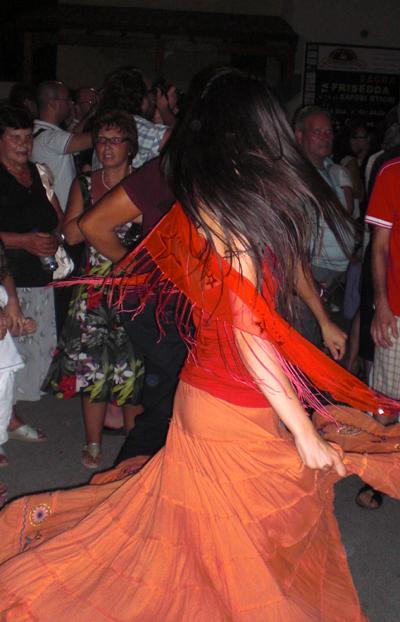



 La serata si è conclusa con la visita alla Torre di Santa Caterina a Nardò. E’ una torre di avvistamento del XVI secolo, fatta costruire dagli spagnoli per contrastare le incursioni ottomane. Si trova in posizione sopraelevata rispetto al mare, come le altre torri con le quali comunicava.
La serata si è conclusa con la visita alla Torre di Santa Caterina a Nardò. E’ una torre di avvistamento del XVI secolo, fatta costruire dagli spagnoli per contrastare le incursioni ottomane. Si trova in posizione sopraelevata rispetto al mare, come le altre torri con le quali comunicava.
The evening ended with a visit to the Tower of St. Catherine at Nardò. It’s a watch tower of the XVI century, built by the Spaniards to counter the Ottoman incursions. It is located in an elevated position above the sea, like the other towers which communicated with.

Torre di Santa Caterina

Torre di Santa Caterina
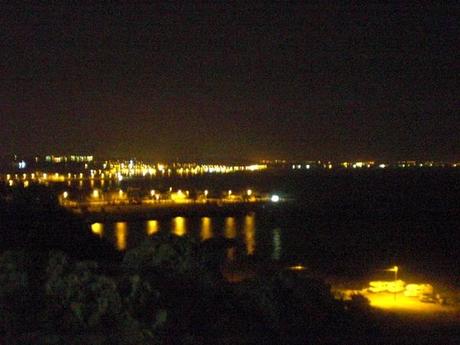 Il secondo giorno ha inizio con una squisita colazione con i tipici “pasticciotti”…alla crema, al cioccolato, con le visciole o con ricotta e nutella..c’è solo l’imbarazzo della scelta…
Il secondo giorno ha inizio con una squisita colazione con i tipici “pasticciotti”…alla crema, al cioccolato, con le visciole o con ricotta e nutella..c’è solo l’imbarazzo della scelta…
La spiaggia del giorno?…Punta Prosciutto nei pressi di Porto Cesareo!
The second day begins with a delicious breakfast with the typical ”pasticciotti”… cream, chocolate, sour cherries, ricotta and Nutella…you’ll be spoiled for choice …
The beach of the day?…Punta Prosciutto, close to Porto Cesareo!

Punta Prosciutto

Punta Prosciutto
Questa si che è una spiaggia che ti fa cogliere l’essenza del luogo!
Situata sulla costa ionica, al confine tra la provincia di Taranto e quella di Lecce, è un angolo incontaminato, selvaggio, caratterizzato da acqua cristallina e trasparente e un’alternanza di scogli e sabbia.
This is a beach that makes you catch the essence of the place!
Located on the Ionian coast, on the border between the provinces of Taranto and Lecce, it is a pristine corner, wild, characterized by transparent and crystal clear water and an alternation of rocks and sand.
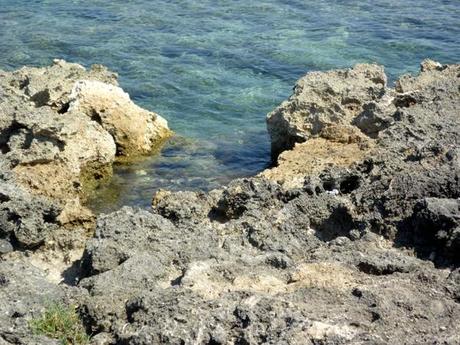
Punta Prosciutto

Punta Prosciutto
Qui abbiamo assaggiato per la prima volta il caffè in ghiaccio al latte di mandorla…una specialità locale ci ha accompagnato durante tutte e due le vacanze…immancabile prima di lasciare la spiaggia!
Here we tasted for the first time the iced coffee with almond milk…a local speciality which accompanied us during both holidays…always inevitable before living the beach!
 Se restate in zona anche per l’aperitivo vi consigliamo il “Fico d’India”. Un localino molto carino, in una splendida location davanti alla Torre di Uluzzo, sulle meravigliose scogliere di Porto Selvaggio.
Se restate in zona anche per l’aperitivo vi consigliamo il “Fico d’India”. Un localino molto carino, in una splendida location davanti alla Torre di Uluzzo, sulle meravigliose scogliere di Porto Selvaggio.
If you decided to remain in the area for the happy hour, we suggest you “Fico d’India”. It’s a nice place, in a superb location in front of the Tower of Uluzzo, on the beautiful cliffs of Porto Selvaggio.

Il Fico d'India - Porto Selvaggio

Torre Uluzzo

Porto Selvaggio
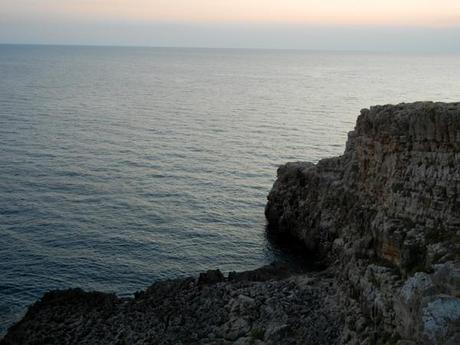
 Rimanete fino al tramonto che ne vale davvero la pena!
Rimanete fino al tramonto che ne vale davvero la pena!
Stay until sunset that is really worth!

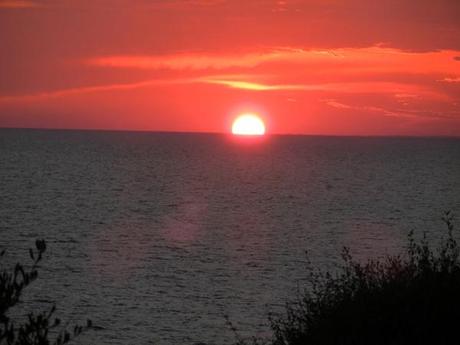

 E per rimanere in tema, dopo Punta Prosciutto…il giorno dopo si va a Punta della Suina!
E per rimanere in tema, dopo Punta Prosciutto…il giorno dopo si va a Punta della Suina!
And to stay on the subject, after Punta Prosciutto (Ham Point) … the next day we go to Punta della Suina (Point of the Porcine)!
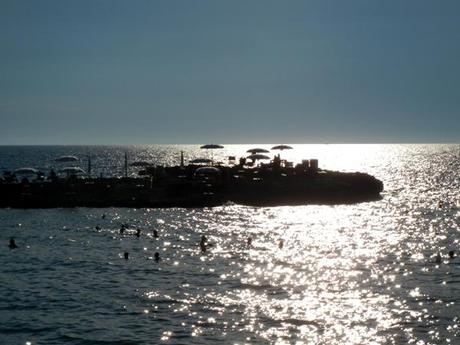
Punta della Suina
Altro posto meraviglioso…in linea con quanto dicevamo prima, anche se c’è davvero tanta gente.
Situata nella Baia di Gallipoli, presenta una costa in parte rocciosa e in parte sabbiosa, con un’acqua cristallina; lasciata la macchina al parcheggio, per raggiungerla attraverserete una fresca pineta.
Per chi fosse interessato a fare campeggio lì ce n’è uno…
Another wonderful place … in line with what we said before, even if there are really too many people.
Located in the Bay of Gallipoli, it partly on the rocky and partly sandy and there is crystal clear water; leaving the car at the parking lot you’ll reach the beach through a cool pine forest.
For those interested in camping here there is one …

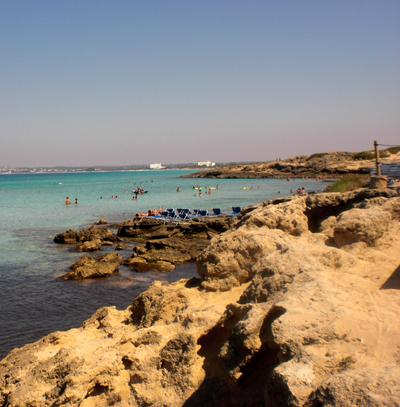
Punta della Suina

 Dopo una bella e intensa giornata di mare, di corsa a casa a prepararsi per Lecce!
Dopo una bella e intensa giornata di mare, di corsa a casa a prepararsi per Lecce!
Città messapica, poi conquistata dai Romani nel III sec. a. C., Lecce è davvero un gioiello. Il centro della città è racchiuso in mura di cinta risalenti al XVI sec., ormai in gran parte distrutte. Originariamente la città presentava quattro porte di accesso: Arco di Trionfo (Porta Napoli), Porta Rudiae, Porta San Biagio e Porta San Martino, quest’ultima crollata nel XIX sec.
After a pretty intense day at the beach, racing home to prepare ourselves for Lecce!
Messapic village, then conquered by the Romans in the III century. a.C., Lecce is truly a gem. The town center is surrounded by walls dating to the XVI century, now largely destroyed. Originallythe city had four gates: Arc de Triomphe (Porta Napoli), Porta Rudiae, Porta San Biagio and Porta San Martino; the latter collapsed in the XIX century.

Porta Rudiae - Lecce

Porta Napoli - Lecce
E’ ricca di monumenti realizzati nel tipico stile del barocco leccese, ma non solo; tra questi spiccano infatti anche vestigia antiche, come per esempio il bellissimo Anfiteatro romano (apertura per visite turistiche: periodo aprile- maggio e settembre: ore 10.30 – 12.00 e 17.00 – 19.00; periodo giugno-agosto: 18.00 – 20.00 ; in orari e periodi di chiusura c’è la possibilità di effettuare visite su prenotazione) . Quest’ultimo, situato in Piazza Sant’Oronzo, fu costruito in Età Augustea (I sec.); misurava circa 102 m × 83 m e riusciva a contenere oltre 25.000 spettatori. Oggi resta l’arena, le gradinate inferiori e parte delle mura esterne.
The city is rich in monuments built in the baroque style of Lecce, but not only; among them stand out in fact even ancient ruins, such as the magnificent Roman Amphitheatre (open for tours: April-May and September: 10.30 - 12.00 5:00 p.m. to 7:00 p.m., June-August: 18:00 to 20:00, during the closed seasons and hours there is the possibility of visits by appointment). The latter, located in Sant’Oronzo Square, was built during the Augustan Age (I century.) Measuring approximately 102 m x 83 m it could hold over25,000 spectators. Today the arena still remains with the lower part of the steps and a portion of the exterior walls.

Anfiteatro romano
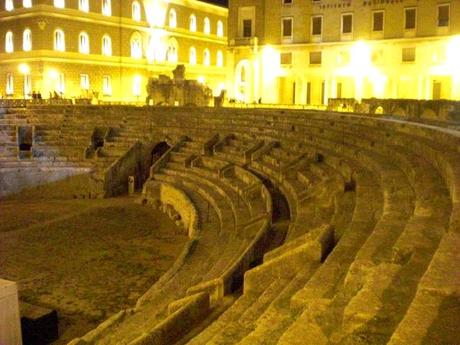 Lecce presenta un caratteristico colore tra il bianco e il giallo paglierino, donato dai numerosi monumenti realizzati con la tipica pietra leccese, vale a dire una roccia calcarea, nota soprattutto per la sua plasmabilità e facilità di lavorazione. Grandemente utilizzata e apprezzata in campo artistico, ha raggiunto stima internazionale grazie all’artigianato locale che nel corso dei secoli ha prodotto la complessa architettura del Barocco leccese, di cui esempi significativi sono i fregi, i capitelli, i pinnacoli e i rosoni che decorano molti dei palazzi e delle chiese della città.
Lecce presenta un caratteristico colore tra il bianco e il giallo paglierino, donato dai numerosi monumenti realizzati con la tipica pietra leccese, vale a dire una roccia calcarea, nota soprattutto per la sua plasmabilità e facilità di lavorazione. Grandemente utilizzata e apprezzata in campo artistico, ha raggiunto stima internazionale grazie all’artigianato locale che nel corso dei secoli ha prodotto la complessa architettura del Barocco leccese, di cui esempi significativi sono i fregi, i capitelli, i pinnacoli e i rosoni che decorano molti dei palazzi e delle chiese della città.
Lecce has a characteristic color between white and yellow, donated by the numerous monuments built with the typical local stone, which is a limestone rock, known for its malleability and ease of processing. Widely used and appreciated in the art, it has reached international respect with local crafts that over the centuries has produced the complex architecture of the Baroque Lecce, of which examples are the friezes, capitals, pinnacles and rosettes that decorate many of the palaces and churches of the city.

Piazza del Duomo
Il Duomo di Lecce, collocato nell’omonima piazza, nel cuore della Lecce Vecchia e a due passi da Piazza S. Oronzo, fu costruito prima nel 1144, poi nel 1230. Successivamente venne ricostruito, per volere del vescovo Luigi Pappacoda, dall’architetto leccese Giuseppe Zimbalo a partire dal 1659.
La piazza comprende una serie di monumenti che si affacciano tutti intorno alla splendida Piazza: la cattedrale del Duomo, i palazzi del Vescovado e del Seminario, il Campanile.
The Cathedral of Lecce, situated in the homonymous square, in the heart of Lecce Vecchia and not far from Piazza S.Oronzo, was first built in 1144, and then rebuilt in 1230. It was later rebuilt, on the orders of Bishop Luigi Pappacoda, by the architect Giuseppe Zimbalo. The works started in 1659.
The square includes a series of monuments all around the wonderful Piazza: the Duomo cathedral, the palaces of the Bishop and of the Seminar, the bell tower.


Cattedrale del Duomo
La Chiesa di Santa Croce si può considerare il monumento simbolo del barocco leccese; fu costruita tra il 1549 al 1695, su disegni di Gabriele Riccardi e da architetti del calibro di Cesare Penna e Giuseppe Zimbalo.
The Church of Santa Croce can be considered the symbolic monument of the Baroque of Lecce; it was built between 1549 to 1695, following the Gabriele Riccardi’s designs by architects Cesar Penna and Joseph Zimbalo.

- Basilica di Santa Croce


La Chiesa di San Matteo, anch’essa eccellente esempio di architettura barocca, fu costruita nel 1667 dai disegni dell’architetto Giovann’Andrea Larducci.
Una curiosa leggenda riguarda una colonna della facciata: come noterete, infatti, una sola delle due colonne presenti riporta un ornamento mentre l’altra risulta essere completamente liscia. Si dice che il diavolo, invidioso dell’artista, sia intervenuto affinchè esso perdesse la vita prima di concludere l’opera.
The Church of St. Matthew, another excellent example of baroque architecture, was built in 1667 following the designs of the architect Giovann’Andrea Larducci.
There is curious legend about a column of the front: as you can see, in fact, just one of the two columns shows an ornament, while the other turns out to be completely smooth. It is said that the devil, envious of the artist, have spoken so he died before the work was concluding.

Chiesa di San Matteo
« D’argento alla lupa passante di nero, attraversante il fusto di un albero di leccio di verde, sradicato e ghiandifero d’oro. »
(Descrizione araldica[6])
Lo stemma di Lecce raffigura un albero di leccio ed una lupa. L’albero sta a rappresentare i boschi di leccio esistenti in Terra d’Otranto fino al 1700, mentre la lupa rappresenta il legame con la civiltà romana.
The emblem of Lecce depicts an holm tree and a wolf. The tree is to represent the existing oak forests in the Land of Otranto until 1700, while the wolf is the link with the Roman civilization.

il simbolo di Lecce
Accompagnati da salentini doc, abbiamo provato alcuni sapori tipici che vi consigliamo…come la pasta e fasuli (pasta e fagioli) e lo spumone…
Accompanied by Salentin friends, we tasted typical food, that we suggest you…such as pasta with beans and the spumone...

spumone
Nel viaggio del 2011, ad inizio Agosto, abbiamo avuto la fortuna di poter assistere ad un concerto gratuito nell’Anfiteatro romano. Indipendentemente dagli spettacoli che vi si tengono, è già emozionante di per sè essere lì…
In the journey of 2011, at the beginning of August, we had the chance to attend a free concert in the Roman amphitheater. Independently from the shows held there, it is already exciting to be there in itself…

Anfiteatro romano
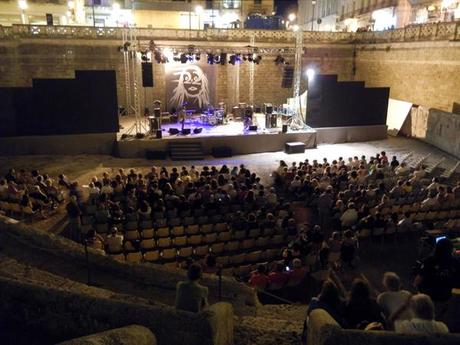

ValDi
L’ultima settimana di Agosto si svolge invece la festa di Sant’Oronzo, patrono della città. Le strade si riempiono di gente, che passeggia tra gli addobbi tipici, al suono dei concertini allestiti nelle piazze.
The last week of August, there is the celebration of St. Horace, the patron of the city. The streets are crowded, people walk among the typical decorations and accompanied by the sound of the concerts set up in squares.


 Nei pressi di Lecce, poco distante dal centro della città, vi consigliamo il locale, il “Sum Project”, un’ex stazione ferroviaria dove si organizzano concerti, proiezioni e altro…
Nei pressi di Lecce, poco distante dal centro della città, vi consigliamo il locale, il “Sum Project”, un’ex stazione ferroviaria dove si organizzano concerti, proiezioni e altro…
Close to Lecce, not far from the city center, we suggest you to go to a very nice place, the “sum Project”, located in an ex railway station, where they organize concerts, movies and more…




 Dopo 505 km arriviamo in Salento!
Dopo 505 km arriviamo in Salento!

 Ovviamente ci siamo cimentate nella danza della Pizzica…tutt’altro che facile e molto faticosa…ma l’atmosfera era davvero coinvolgente!
Ovviamente ci siamo cimentate nella danza della Pizzica…tutt’altro che facile e molto faticosa…ma l’atmosfera era davvero coinvolgente!



 La serata si è conclusa con la visita alla Torre di Santa Caterina a Nardò. E’ una torre di avvistamento del XVI secolo, fatta costruire dagli spagnoli per contrastare le incursioni ottomane. Si trova in posizione sopraelevata rispetto al mare, come le altre torri con le quali comunicava.
La serata si è conclusa con la visita alla Torre di Santa Caterina a Nardò. E’ una torre di avvistamento del XVI secolo, fatta costruire dagli spagnoli per contrastare le incursioni ottomane. Si trova in posizione sopraelevata rispetto al mare, come le altre torri con le quali comunicava. Il secondo giorno ha inizio con una squisita colazione con i tipici “pasticciotti”…alla crema, al cioccolato, con le visciole o con ricotta e nutella..c’è solo l’imbarazzo della scelta…
Il secondo giorno ha inizio con una squisita colazione con i tipici “pasticciotti”…alla crema, al cioccolato, con le visciole o con ricotta e nutella..c’è solo l’imbarazzo della scelta… Se restate in zona anche per l’aperitivo vi consigliamo il “Fico d’India”. Un localino molto carino, in una splendida location davanti alla Torre di Uluzzo, sulle meravigliose scogliere di Porto Selvaggio.
Se restate in zona anche per l’aperitivo vi consigliamo il “Fico d’India”. Un localino molto carino, in una splendida location davanti alla Torre di Uluzzo, sulle meravigliose scogliere di Porto Selvaggio.
 Rimanete fino al tramonto che ne vale davvero la pena!
Rimanete fino al tramonto che ne vale davvero la pena!


 E per rimanere in tema, dopo Punta Prosciutto…il giorno dopo si va a Punta della Suina!
E per rimanere in tema, dopo Punta Prosciutto…il giorno dopo si va a Punta della Suina! Dopo una bella e intensa giornata di mare, di corsa a casa a prepararsi per Lecce!
Dopo una bella e intensa giornata di mare, di corsa a casa a prepararsi per Lecce! Lecce presenta un caratteristico colore tra il bianco e il giallo paglierino, donato dai numerosi monumenti realizzati con la tipica pietra leccese, vale a dire una roccia calcarea, nota soprattutto per la sua plasmabilità e facilità di lavorazione. Grandemente utilizzata e apprezzata in campo artistico, ha raggiunto stima internazionale grazie all’artigianato locale che nel corso dei secoli ha prodotto la complessa architettura del Barocco leccese, di cui esempi significativi sono i fregi, i capitelli, i pinnacoli e i rosoni che decorano molti dei palazzi e delle chiese della città.
Lecce presenta un caratteristico colore tra il bianco e il giallo paglierino, donato dai numerosi monumenti realizzati con la tipica pietra leccese, vale a dire una roccia calcarea, nota soprattutto per la sua plasmabilità e facilità di lavorazione. Grandemente utilizzata e apprezzata in campo artistico, ha raggiunto stima internazionale grazie all’artigianato locale che nel corso dei secoli ha prodotto la complessa architettura del Barocco leccese, di cui esempi significativi sono i fregi, i capitelli, i pinnacoli e i rosoni che decorano molti dei palazzi e delle chiese della città.





 Nei pressi di Lecce, poco distante dal centro della città, vi consigliamo il locale, il “Sum Project”, un’ex stazione ferroviaria dove si organizzano concerti, proiezioni e altro…
Nei pressi di Lecce, poco distante dal centro della città, vi consigliamo il locale, il “Sum Project”, un’ex stazione ferroviaria dove si organizzano concerti, proiezioni e altro…




